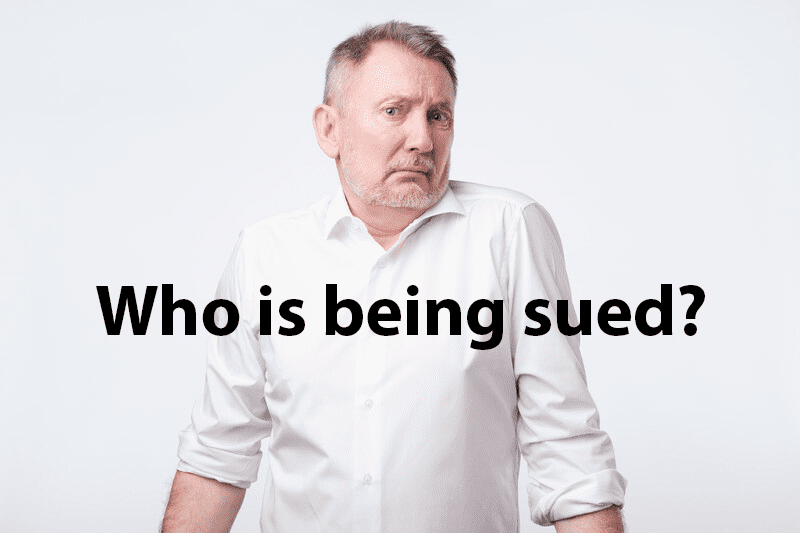Who Is Really Being Sued? A Guide To Personal Injury Claims & Lawsuits

Many individuals who have suffered a serious injury due to negligence or an accident are reluctant to pursue legal action because they don’t want to sue someone they
know, a business they like, or another ordinary person like themselves.
First of all, a distinction must be made between making a claim and filing a lawsuit. In more than half of all cases, a client’s claim gets settled prior to the filing of a lawsuit. When a case gets settled prior to filing a lawsuit, it almost always settles with the negligent party’s insurance company. Only if the case cannot be resolved prior to filing a lawsuit does the negligent party get named in a lawsuit. In Ohio, the party named in the lawsuit must be the negligent party, however, in reality, if a settlement is reached or a verdict is achieved, it is almost always the wrongdoer’s insurance company that pays the settlement or the verdict as well as the attorney fees and any other legal costs.
This is one of the primary reasons why all drivers in the state of Ohio are required by law to carry automobile liability insurance and why most businesses have general insurance coverage. In fact, it is rare that a personal injury attorney will even accept a case against an individual or business that doesn’t have insurance. Since all injury attorneys work on a contingency-based fee agreement, and only get paid if they win AND if they collect money, winning a case against an uncollectible defendant may be personally rewarding but if no money is received then the injured party remains uncompensated and her lawyer goes unpaid. Personal injury cases are high-risk and expensive to prepare and win, which is why most lawyers will steer clear if the defendant is uncollectable.
So, how does the process of getting a settlement from an insurance company work?
First Steps: Determining Liability
Every personal injury case requires proof that negligence occurred, that there was a duty of care owed to the person harmed by the negligence, that the duty was breached and that the breach is what caused the injury.
For example, in order to prove that another driver was responsible for the accident that caused your injuries, you will need evidence. Evidence in a crash case can be photos, witness statements, police reports, vehicle damage, medical records, police reports, videos and countless other resources. While there is not one particular type of evidence that is required, the more favorable evidence that injured party can produce, the stronger her case is. Once the plaintiff’s lawyer can convince the insurance company that their customer was at fault it becomes easier to resolve the case.
Once liability is established the remaining issue to be resolved is what amount of money will fairly compensate the victim for her injuries, medical bills, wage loss and pain and suffering. Often, even when liability is established, lawsuits get filed solely to determine the value of an injury.
Filing A Claim vs. Suing An Insurance Company
With certain kinds of cases, a claim is made for compensation to the negligent party or his insurer before a lawsuit is ever filed. When you hire an attorney, he or she will begin the process of negotiating the claim and will work directly with the at-fault party’s insurance provider to try and achieve a fair settlement quickly and if possible without filing a lawsuit. If it is determined that the claim cannot be negotiated favorably for both parties, a lawsuit will then need to be filed. Unfortunately there are many cases for which engaging in settlement attempts prior to filing a lawsuit is useless and a lawsuit is filed right away.
Lawsuits, Mediation and Trial
Once the process of filing a lawsuit has begun, the individual or business responsible for the injury will be served a summons and should then notify their insurance provider of the lawsuit. The insurance company will then hire and pay for an attorney to represent their customer in the lawsuit. Your attorney will begin collecting the necessary documents and evidence to support your case, including medical records, employment records, witness accounts, accident reports and much more. Both parties’ lawyers may request depositions of parties, witnesses and doctors as well. Depending on how the case develops, you may be offered a settlement at any point during this litigation process. If your attorney is able to negotiate mutually favorable terms, your case may be settled without ever having to go to trial. Over 90% of civil lawsuits filed in Ohio are resolved before trial. If your case cannot be resolved, the lawyers may agree to mediate your case in the hopes of finding a resolution before trial. If mediation is unsuccessful and no resolution to the case can be achieved, the court will conduct a trial, likely to a jury where a juror of eight adults will listen to all the evidence and return a verdict for one of the parties.
Final Thoughts
If you’ve been seriously injured in an accident or due to someone else’s negligence, don’t be afraid to contact an attorney. The sooner you learn your options and the sooner a lawyer can begin to gather evidence and the stronger your case will likely be. Your lawyer will advise you about options to obtain financial compensation that will make the most sense for your needs and your case. Contact Lowe Scott Fisher today to talk with an attorney about your case, free of charge. Our offices are located in Cleveland, Chardon, and Lorain, OH
Back To Blog